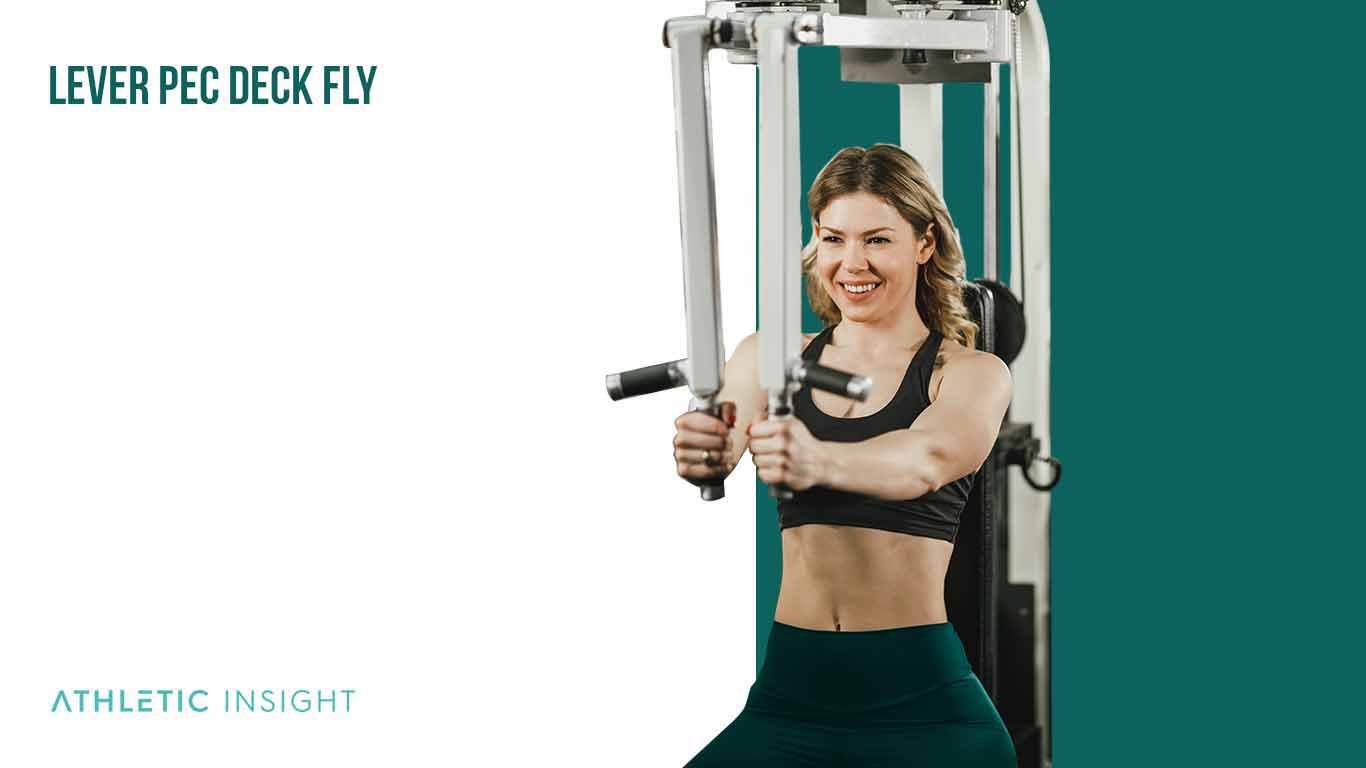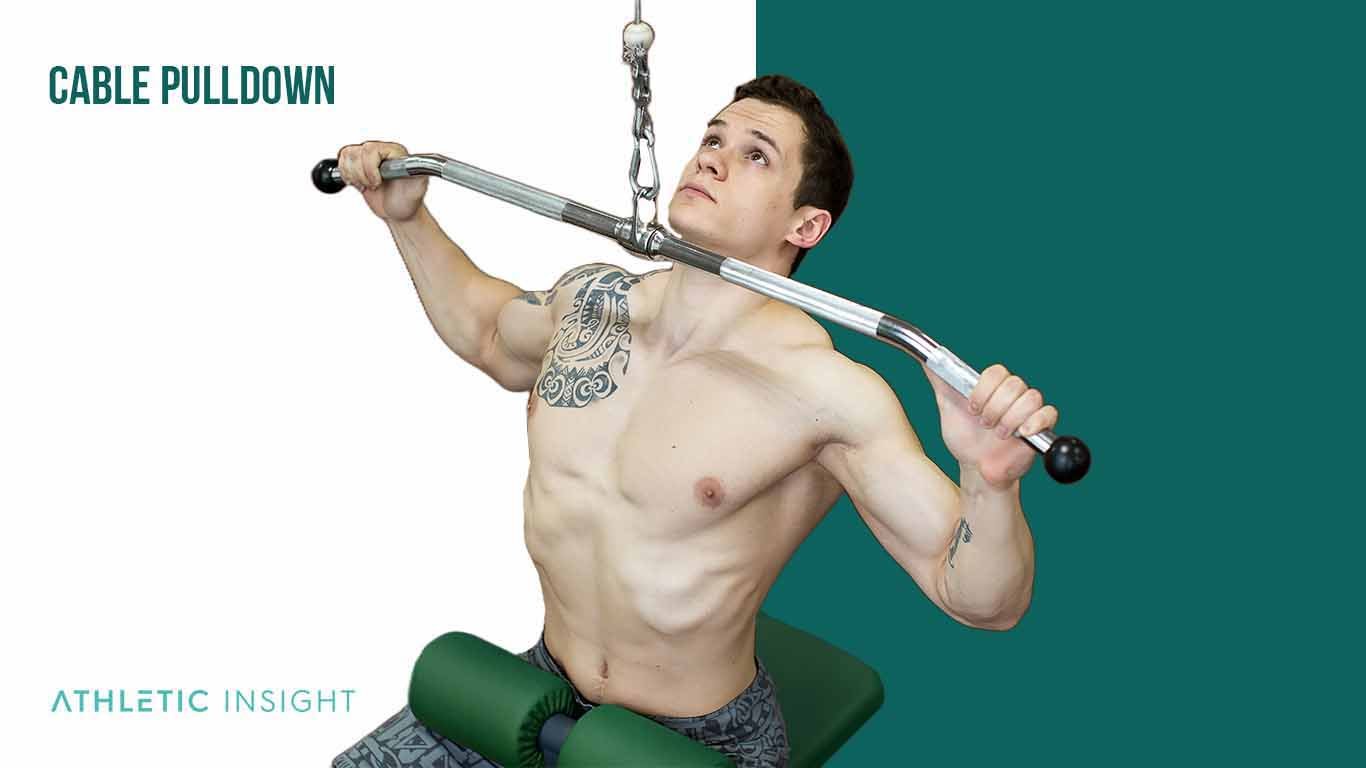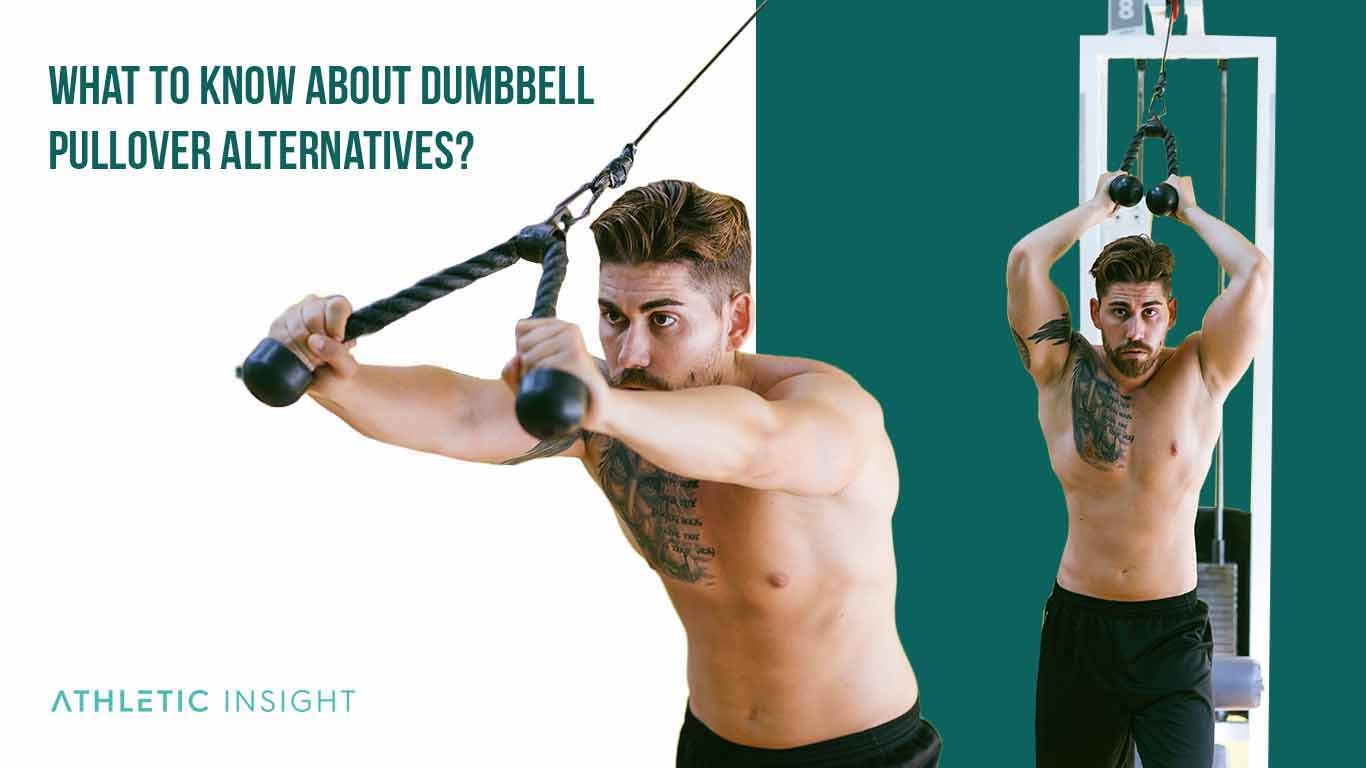The standard dumbbell pullover is where an athlete lies flat against a bench and raises a dumbbell, or another weight, over their head with both arms. A dumbbell pullover alternative is an exercise that replaces the DB pullover and targets the latissimus dorsi, pectoralis major, and triceps brachii muscles.
Certain individuals with physical disabilities, injuries, or impairments may need a substitution when targeting these muscle groups. That is why dumbbell pullover alternatives exist, often allowing for athletes to isolate certain muscles and replace other exercises altogether, like the dumbbell pullover.
Dumbbell pullovers are low risk and have a simplistic form that beginners can master with little training, but if an alternative is needed, you may find that these alternatives are a bit more difficult to perform. Not only that, but some alternatives are considered higher risk.
While the dumbbell pullovers can result in tears in your shoulders, it is incredibly unlikely. However, an alternative like the bench press may lead to blown-out pectoral muscles, rotator cuff injuries, and many additional potential injuries.
If you find yourself looking for an exercise to replace the dumbbell pullover, the bench press, cable chest dip, lever pec deck, cable pulldown, and cable forward tricep extension are all great alternatives. Each of these will target similar muscles and are low to medium difficult to learn proper form.
1. Bench Press
The bench press is a dumbbell pullover alternative that focuses on the pectoralis major and triceps. Weightlifters, athletes, and anyone looking to get into shape and build significant muscle in the chest area can use this major muscle movement.
Since the bench press is an effective exercise for both size, definition, and strength, it can be used by all types of athletes. From strongman competitors to bodybuilders to Football players. It is also widely used around the world and is the single most popular compound exercise to exist.
Since muscle mass declines with age, a bench press helps as a functional exercise for any age and gender to improve daily activities like pushing and carrying. Athletes who use pulling muscles, such as wrestlers, rock-climbers, and swimmers, often use the bench press as well, creating a perfectly balanced body.
To perform the exercise, have a spotter with you to ensure your safety. Lie flat on the bench, back down, and grip the bar with your hands wider than shoulder width. Your hands should be directly above your elbows to ensure you’re pushing with maximum force. Inhale as you lower the bar; exhale as you push up.
This move risks tearing the rotator cuff muscles, so your back should be flat on the bench and not at an angle, at least when you’re beginning. Focus on using less weight, utilize proper form, and focus on minor details like setting your shoulder blades back. Your feet should also be still and planted.
The dumbbell bench press is an intermediate dumbbell pullover alternative that is a moderate risk but with huge benefits. The bench press also has different variations. Bench press variations include the inclined bench press (focuses more on the anterior deltoids), declined bench press (emphasizes the pectoralis major), narrow grip (focuses more on tricep strength), and the chest fly (solely targets the chest muscles).
2. Cable Chest Dip
The cable chest dip is a dumbbell pullover alternative that focuses on the pectoralis major, triceps brachii, and pectoralis clavicular muscles. In other words, the chest and arm muscles. The rhomboids are also used, alongside a few other minor muscle groups.
To perform the cable chest dip, keep your arms straight with your shoulders above your hands after standing and mounting the dip bar. Position the bar diagonally under your palms. Next, bend your knees slightly alongside your arms, lowering your body. Once you feel the stretch in the chest and shoulders, straighten and repeat.
The cable chest dip is a popular strength exercise that works the pecs and upper body and is meant for moderate to advanced weightlifters that have an understanding of the proper motion and technique.
The cable tricep dip is a basic cable chest dip alternative that focuses more on the triceps brachii. Both these dumbbell pullover alternatives are beneficial for athletes looking to build muscle and strengthen the chest or triceps.
3. Lever Pec Deck Fly
The lever pec deck fly is a dumbbell pullover alternative that focuses on the pectoralis major, sternal, and minor muscles. The lever pec deck fly is a beginner dumbbell pullover alternative. This pullover exercise alternative is simple and beginner friendly, making it so that anyone can use the machine with ease.

The lever pec deck fly targets chest muscles without worrying about balance, something that is required for the dumbbell pullover. People with lower-body injuries find this alternative beneficial in their fitness regimen since this move is performed seated. Additionally, those who are new to training these specific muscles find the lever pec deck fly helpful in supporting and increasing good posture.
This auxiliary move focuses on isolating muscles in a pushing force. The lever pec deck fly will help chest muscles grow stronger and assist in day-to-day activities involving pushing and lifting.
To perform the exercise, sit on the machine, facing away from the padded back. Place your forearms on the padded level with your upper arms parallel. Press the levers together until the chest muscles stretch, then repeat.
A few common mistakes people make when performing the lever pec deck fly are holding their breath or using their legs. Some people arch their back or use momentum, so keep these in mind when trying this move yourself. This alternative makes a great replacement for targeting the chest muscles if done properly.
The lever pec dec fly has a few variations and modifications. If an athlete has a hand or wrist injury, they can use the machine with the elbow pads instead of the handles, which maintain a 90-degree position and do not extend their arms out fully. For more advanced exercises, athletes can do one arm at a time to target the abdominal muscles. Add more weight and repetitions as your fitness improves.
4. Cable Pulldown
The cable pulldown is a dumbbell pullover alternative that focuses on the levator scapulae, rectus abdominis, and latissimus dorsi muscles. As the name implies, a weighted cable system targets various muscles in a compound move, building strength in the upper body and improving balance with core stability.

Core strength will improve by adding this alternative to any exercise regimen. Not only that, but the pecs, deltoids, triceps, delts, wrists, and obliques will get stronger, and the torso appearance will change. Choose an appropriate weight for your fitness level and age until you master the form for this exercise.
To perform this exercise, attach the two hand attachments to the cable, and be sure that there’s sufficient weight to pull down that makes the muscles work but not strain. Brace your abs, and keep your hands shoulder-width apart with your elbows locked. Ensure that your arms are straight, but your knees are slightly bent. Breathe out while pulling in a smooth, controlled motion with your hips bending forward a bit. Pause, inhale and return for however many reps or sets you wish to do.
Not bracing the abs, rounding the back, or not completing the range of motion should be avoided to prevent injury and ineffectiveness. It’s recommended to avoid this cable pullover alternative for people who have a wrist, elbow, shoulder, or back injury.
The cable pulldown has different variations. A cable pulldown variation uses stretch bands at home as opposed to a machine. This exercise can be done kneeling, targeting the abs that squeeze during the weight exertion. An overhand grip places more emphasis on the triceps.
5. Cable Forward Tricep Extension
The cable forward tricep extension is a dumbbell pullover alternative that focuses on the back arm muscles, or the triceps brachii, building strength and definition in the process. Beginner to intermediate workout enthusiasts can perform this muscle movement. Depending on gender and age, the weight will vary.
How many reps and how much an athlete lifts depends on the practice, training, and technique they have. For example, elite, competitive strength lifters can do this move to achieve greater mass in their upper arms. It isolates the triceps during the negative portion of the movement, and all three sections of the tricep, the long, lateral, medial heads, and opposite of the bicep are targeted.
To perform this exercise, attach the double rope to a point on the cable where it’s near the head. Grip the handles overhead, hinge forward, and take a step away from the pulley in a split stance for stability. Activate your core muscles, and keep your elbows close to your head. Extend your elbows forward, flex, stretch and repeat.
Do at least eight repetitions with a reasonable weight that’s not too heavy. Warming up beforehand is a good idea, and add this move for more variety to the training. Never load up to where the move feels wobbly or unstable. This extension is isolated, meaning it doesn’t need a lot of weight because that could become dangerous. Remember to pull straight, not up or down, and warm up with dips or presses beforehand.
The cable forward tricep extension has different variations. These variations include the seated or upright overhead triceps extension that bulks up the triceps, using a barbell, dumbbells, or cables. Don’t go overboard with the weights, or there’s a risk of injuring the elbows.
Use bodyweight for a challenging workout if there’s no access to equipment. By varying the position, the intensity increases or decreases. Super setting or doing two exercises back to back encourages muscular development.
What to Know About Dumbbell Pullover Alternatives?
Dumbbell pullover alternatives are moves that exercise enthusiasts can do as opposed to normal dumbbell pullovers. These exercises are helpful when there aren’t dumbbells available or if an athlete needs to vary their workouts.

These alternatives will help build more muscle in other places that possibly weren’t targeted with normal pullovers. Alternatives can improve more large and small muscle groups, such as the back and triceps.
While dumbbell pullovers build the chest and are an essential component to upper body training day, these alternatives are good for those who need a modification. For example, if they don’t have the same mobility to complete a pullover.
Lastly, these DB pullover alternatives allow an individual to try out new equipment and expand their knowledge in the gym.
Which dumbbell pullover alternative is beginner-friendly?
The cable pulldown and the cable forward tricep extension are both alternative exercises that are some of the best exercises for beginners. They are adjustable to fit any fitness level and can benefit overall health with multiple muscles activating.
Which dumbbell pullover alternative is better for the chest?
The best dumbbell pullover alternatives are the lever pec deck fly and the bench press. These are only two of many chest exercises you can incorporate into your gym routine.
Which dumbbell pullover alternative is better for the back?
The cable pulldown is a better dumbbell pullover back alternative and uses a lot of other muscle categories to give an effective full-body move. Using all of these alternatives to a pullover will give quick results and are some of the best back exercises available.
Which dumbbell pullover substitute is better for strength?
The bench press is the best dumbbell pullover substitute for strength. However, all of these utilize resistance or weight. Regardless of which substitute is used, once adding it to daily exercise, strength and mobility will increase.
When should an athlete use a dumbbell pullover alternative for exercise?
When a routine becomes easy, change it up. Never work out more than five days a week, either alternating or only on weekdays. However, athletes most likely would use an alternative when they need a variant to maximize their fitness and their workouts are becoming less effective.
What are the advantages of substituting the dumbbell pullover?
The advantages of substituting the dumbbell pullover are that they give the body a different move to work on, i.e., different muscles to use than the normal routine. Athletes or weightlifters can also use a pullover alternative if they have an injury and are looking for a specific move that doesn’t target where they’re hurt.
Can dumbbell pullover alternatives replace the dumbbell pullover?
These can replace the dumbbell pullover. If exercisers miss the pullover and want to return to it down the road once they try out these alternatives for a while, substituting larger weights for more challenge is another option.
What are dumbbell pullover Variations?
The dumbbell pullover variations include the bodybuilder dumbbell pullover, where the serratus muscle activates. Rather than laying on the flat bench, use it as a headrest. With the torso perpendicular to the bench, the head hangs over the side, but the shoulders are supported. Lower the weight behind the head in an even tempo trying to touch the floor with bent elbows.
Another suggestion would be to use a barbell, an EZ bar, or a machine pullover alternative for a challenge. Do the pullover on the floor for a modification, instead of a bench. This technique will keep the weights from lowering too far.



